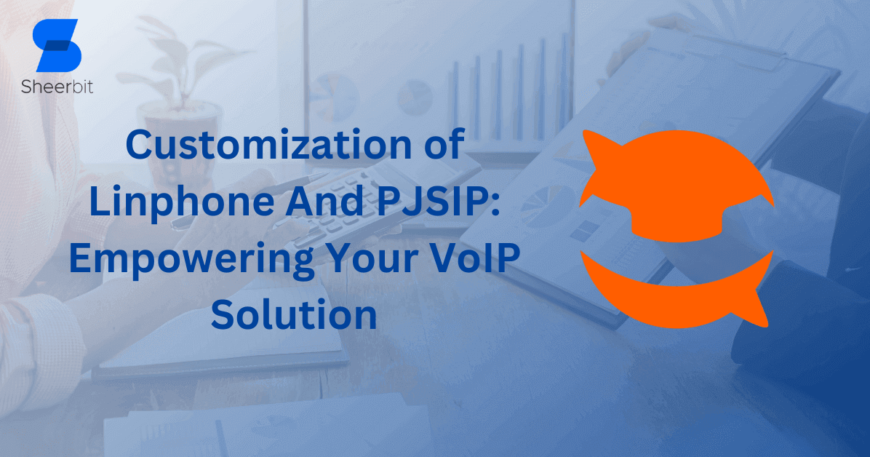VoIP is becoming a fundamental component of our communication environment in the modern digital age. VoIP provides a convenient and affordable means to communicate with people worldwide, whether for business meetings, personal talks, or customer service. A VoIP application’s basis is laid by two well-known open-source libraries, Linphone and PJSIP. However, customization is essential to stand out in the congested VoIP industry. The customization of Linphone and PJSIP will be covered in this post, giving you the tools to develop a strong and distinctive VoIP solution.
Understanding Linphone and PJSIP
It’s crucial to fully grasp Linphone and PJSIP before getting into customization.
Linphone:
Linphone is a free and open-source VoIP tool for voice and video calls. It provides options including file sharing, instant chat, audio and video calling, and more. Linphone is a flexible option for developers since it is accessible on various operating systems, including Android, iOS, Windows, macOS, and Linux.
PJSIP:
PJSIP, on the other hand, is a free, C-written multimedia communication library. VoIP, video conferencing, and instant messaging are just a few real-time communication apps that may be built using its APIs. Numerous VoIP developers use PJSIP because of its great Performance and adaptability.
Why Customize Linphone and PJSIP?
Although Linphone and PJSIP include a wide range of capabilities, customization might give you an advantage over your rivals in the VoIP industry. Here are some strong arguments in favor of customizing these libraries:
- Branding: Customization enables you to design a distinctive and branded VoIP application that reflects the character and ideals of your business.
- Feature Enhancement: You may include features and functions necessary for your target audience by adjusting Linphone and PJSIP to your particular demands.
- User Experience: Your VoIP application may be made more intuitive and user-friendly by customizing the user interface (UI) and user experience (UX).
- Integration: Customization can assist with the smooth integration of Linphone and PJSIP into your ecosystem if you already have existing systems or services.
- Security: You may put additional security measures in place to safeguard user information and privacy; this is crucial in the contemporary digital context.
Let’s examine how to do that now that we know how important personalization is.
Customizing Linphone and PJSIP
Linphone and PJSIP customization entails several stages and requires a solid command of these libraries and programming know-how. Listed below is a step-by-step guide to get you started:
-
Set Clear Objectives:
Set your goals before you begin customizing. What are you hoping to accomplish with your unique VoIP application? List the features, UI/UX enhancements, and any other adjustments you need.
-
Choose the Right Platform:
Choose the platform or platforms you wish to focus on. Linphone for Android, iOS, Windows, macOS, or Linux may be tailored to meet the needs of your target market.
-
Familiarize Yourself with the Documentation:
Both Linphone and PJSIP have thorough Documentation that describes their architecture, APIs, and customization possibilities. To learn how these libraries function and how to customize them, spend some time reading the Documentation.
-
Customize the UI/UX:
The customization process frequently includes customizing the user interface and user experience. The app’s style, colors, icons, and navigation may be changed to better reflect your brand and increase usability.
-
Add New Features:
You must dig into the code and implement new features if it is one of your goals. This phase necessitates a thorough understanding of programming, whether for interacting with external systems, putting chatbots in place, or improving call quality.
-
Test Thoroughly:
A critical step in the customization process is testing. Be careful to properly test your modified PJSIP and Linphone to find and correct any faults or problems. Numerous situations should be tested, including multiple network configurations and device types.
-
Ensure Security:
In VoIP applications, Security comes first. Protect user data and privacy using encryption, authentication, and other security procedures. Vulnerabilities can be found with the use of penetration tests and security audits.
-
Optimize Performance:
Performance optimization is crucial to guarantee that your customized VoIP application functions properly and efficiently. Code should be improved, latency should be decreased, and Performance should be good across various platforms and networks.
-
Documentation and Support:
Give your customized VoIP application clear and user-friendly Documentation. Additionally, provide customer care to help consumers with any problems they could run across.
-
Maintain and Update:
Maintain your customized VoIP program regularly to ensure it remains compatible with the newest hardware and operating systems. Watch for updates to PJSIP and Linphone since they could provide new functionality or improve Security.
Tools and Resources for Customization
You’ll want the appropriate equipment and resources to customize Linphone and PJSIP properly:
- Development Environment: Create a development environment with the tools, compilers, and libraries required for the platform(s) you have selected.
- Version Control: To maintain your codebase and, if necessary, work with a team, use version control tools like Git.
- IDE: The coding process may be much simpler with an effective Integrated Development Environment (IDE). Pick one that is compatible with Linphone and PJSIP’s programming languages.
- Testing Tools: Invest in testing tools and services to guarantee that your customized VoIP application satisfies quality requirements.
- Community and Forums: Join the communities and forums for Linphone and PJSIP to ask questions, learn from others, and keep up with best practices.
- Security Tools: Put strong security measures in place with security tools and libraries in your customized VoIP application.
Case Study: Customizing Linphone for a Healthcare App
Let’s look at a fictitious case study to demonstrate the potential of customization:
Scenario: Linphone will serve as the foundational library for a secure telemedicine application being developed by a healthcare business. They need adjustments to guarantee HIPAA compliance, enhance the app’s functionality for physicians and patients, and connect it with their current electronic health record (EHR) system.
Customizations Implemented:
- HIPAA Compliance: The developers use end-to-end encryption for all audio and video calls to secure patient data. Additionally, they guarantee that all data is securely kept and that only authorized individuals may access it.
- User Experience Enhancement: The user interface (UI) has been modified to provide pertinent patient data during conversations, such as medical background and appointment information. Patients may easily schedule appointments, and clinicians can access patient records on the phone.
- Integration with EHR: The EHR and telemedicine software are fully connected, enabling clinicians to update patient records while on calls. The productivity of healthcare practitioners is increased because of this connection, which also streamlines administrative work.
- Customized Branding: To further establish their brand identification, the app is branded with the healthcare startup’s logo, colors, and unique splash screen.
- Security Audits: To ensure it conforms to HIPAA requirements and is resistant to security risks, the application is subjected to stringent security assessments.
To establish a safe, user-friendly, and effective telemedicine application that sets them apart in the healthcare market, the healthcare firm tailored Linphone to meet their unique requirements.
Conclusion
By modifying Linphone and PJSIP, you can design a VoIP system that satisfies user needs and corporate objectives. Customization enables you to adapt these libraries to your requirements, whether you want to strengthen branding, add new functionality, or increase Security. Immediately to guarantee the success of your customized VoIP application, the modification must be approached with careful design, exhaustive testing, and a commitment to continuing maintenance. If you have the necessary tools and resources, you can fully utilize Linphone and PJSIP and give your users a distinctive and potent VoIP experience.





